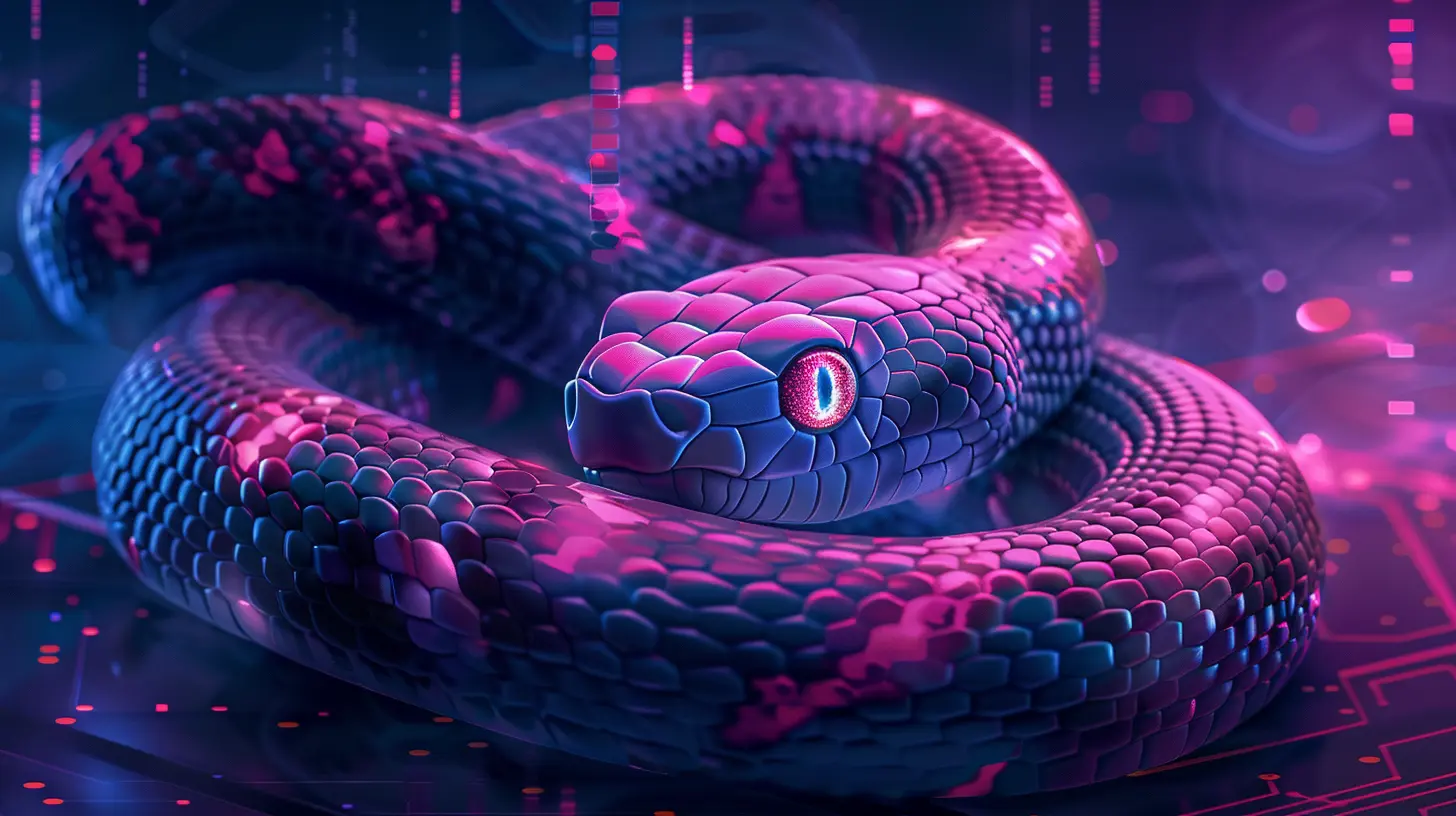The Evolution of Python: What's Next for the Language?
5 November 2025
Python has come a long way since its inception, hasn't it? From being a humble, hobbyist project to becoming one of the most popular programming languages in the world, it's been quite the journey. But we all know the tech world never stands still. So, what's next for Python? Will it continue to dominate, or is there something lurking around the corner ready to take its place?
In this article, we'll dive into the evolution of Python, explore the latest trends, and peek into the crystal ball to see what the future might hold for this beloved language.

A Brief History of Python
Before we get into what's next, let's take a quick stroll down memory lane. Python was created in the late 1980s by Guido van Rossum while he was working at the Centrum Wiskunde & Informatica (CWI) in the Netherlands. Released in 1991, Python was designed to be simple, readable, and straightforward—qualities that have remained central to the language as it has evolved.Python is often compared to languages like C++ and Java. But while those languages can feel like navigating a maze, Python feels more like a smooth, open road. It's clean, easy to understand, and beginner-friendly, which is why it’s often the first language people learn when diving into coding.
Key Milestones in Python's Evolution
- Python 1.0 (1991): The first release. It already included many features that are still beloved today, like exception handling and dynamic typing.- Python 2.0 (2000): This version introduced list comprehensions and garbage collection, making Python more efficient and versatile.
- Python 3.0 (2008): A major overhaul that broke backward compatibility but introduced many improvements, such as better Unicode support and refined syntax.
Python 3.x is now the standard version, and with each update, it continues to grow stronger, faster, and more versatile. But Python has never been just about the language itself. Its ecosystem—the libraries, frameworks, and community—has played a massive role in its success.

Why is Python Still So Popular?
Python’s popularity has skyrocketed, and it's no accident. There are a few key reasons why Python remains a go-to language for developers, data scientists, and even hobbyists.1. Ease of Use and Readability
Python’s syntax is clean and readable. You don’t need to be a seasoned developer to understand what’s going on in a Python script. It's like reading English (well, almost). This simplicity lowers the barrier to entry, making it an ideal language for beginners and professionals alike.2. Versatility
Whether you're interested in web development, data science, artificial intelligence, machine learning, automation, or even game development, Python has a library or framework for you. Want to build a website? Use Django or Flask. Need to crunch some numbers? NumPy and Pandas have got your back. Working with AI? TensorFlow and PyTorch are at your disposal.3. Active Community and Libraries
Python has a massive, active community. This means that no matter what problem you're trying to solve, there's probably someone who has already solved it—and shared their code. Additionally, its package manager, `pip`, makes it incredibly easy to install and manage libraries.4. Cross-Platform Compatibility
Python runs on pretty much anything: Windows, macOS, Linux, and even mobile devices. This cross-platform nature makes it ideal for developers who need their code to work in different environments.5. Support for Data Science and AI
Python is the de-facto language for data science, artificial intelligence, and machine learning. Libraries like NumPy, Pandas, Scikit-learn, TensorFlow, and PyTorch have made Python an industry standard for these fields. As AI and data science continue to grow, Python’s relevance is only going to increase.
Recent Developments in Python
Python isn’t resting on its laurels. It's constantly evolving to meet the needs of modern developers. Let's look at some of the more recent developments that have taken Python into the 2020s.1. Performance Improvements
One criticism that has dogged Python is its relatively slow performance compared to languages like C++ or Rust. However, recent versions of Python (such as 3.9, 3.10, and 3.11) have introduced numerous performance improvements. Python’s core development team is actively working on speeding up the interpreter, with the aim of making Python two times faster by Python 3.11.2. Pattern Matching
Introduced in Python 3.10, structural pattern matching is Python’s take on a feature commonly found in languages like Rust and Swift. It allows developers to match complex data structures in a clean and expressive manner. This is a game-changer for anyone working with nested data or complex object hierarchies.3. Type Hinting and Static Typing
While Python is dynamically typed, the introduction of type hinting (starting with Python 3.5) has been a significant development. It allows developers to specify types for variables, function arguments, and return values. While this doesn’t affect runtime, it can make code more readable and allow for better tooling and error checking, similar to statically typed languages like Java or C#.4. Asyncio and Concurrency
Concurrency has always been a challenge in Python, but the introduction of the `asyncio` module has made it easier to write concurrent code without relying on threads or processes. As more and more applications require handling multiple tasks simultaneously (think web servers or real-time applications), this has become an essential tool in the Python developer's toolkit.
So, What’s Next for Python?
Python’s future looks bright, but it’s not without challenges. Let’s explore where the language is headed and what developments we can expect in the coming years.1. Continued Focus on Speed
Performance has always been a sticking point for Python. While it's great for rapid development, its execution speed leaves something to be desired—especially when compared to languages like C or Rust. However, the Python development team is well aware of this and is actively working on solutions.Project Pyjion, led by Microsoft's Python engineering team, is one such effort. Pyjion aims to integrate Python with the .NET runtime, benefiting from Just-In-Time (JIT) compilation to significantly improve performance.
Additionally, CPython, the reference implementation of Python, is undergoing continuous optimization. Python 3.11, for example, promises to be up to two times faster than Python 3.10, and this performance push is expected to continue in future releases.
2. Expansion of Type Hinting and Static Typing
Type hinting has been a big win for Python, but it’s still not as robust as the static typing found in languages like TypeScript or Java. We can expect further enhancements to Python’s optional typing system, making it easier to write typed code without sacrificing Python’s dynamic nature.Tools like MyPy are already helping developers catch type errors before runtime, and as Python’s ecosystem evolves, we’ll likely see even more sophisticated static analysis tools.
3. Growing Role in AI and Machine Learning
Python is already the dominant language in AI and machine learning, but as these fields continue to grow, so too will Python’s influence. Expect more specialized libraries, better integration with hardware (like GPUs and TPUs), and more efficient ways to handle large datasets.Frameworks like TensorFlow and PyTorch are already pushing the boundaries of what’s possible with Python in AI. Additionally, Python’s simplicity makes it easier for researchers, who may not have a programming background, to experiment with complex algorithms.
4. WebAssembly and Python in the Browser
WebAssembly (Wasm) is an exciting technology that allows languages like C, Rust, and even Python to run in the browser at near-native speeds. While Python has traditionally been a server-side language, we may see it make inroads on the frontend thanks to WebAssembly.Projects like Pyodide are already working on bringing Python to the browser, opening up new possibilities for web development. Imagine being able to write your entire web application, both frontend and backend, in Python! That’s a future that could be just around the corner.
5. Stronger Push for Mobile Development
While Python has had limited success in mobile development (with frameworks like Kivy and BeeWare), it hasn’t been a primary language in the mobile space. However, with cross-platform tools gaining popularity and the rise of mobile computing, we may see a stronger push for Python on mobile platforms.Google’s Skia graphics engine, which powers the Flutter SDK, also has Python bindings. This could open up new possibilities for Python developers interested in mobile app development.
Will Python Stay on Top?
Here’s the million-dollar question: Will Python remain at the top, or will it be overtaken by other languages? The tech world is fickle, and languages that seem unstoppable can quickly fall out of favor (looking at you, Perl).But for Python, things look promising. Its versatility, ease of use, and massive community support give it a strong foundation. Plus, the ongoing efforts to improve performance, expand its capabilities, and integrate it with cutting-edge technologies like AI and WebAssembly are keeping it relevant.
That being said, no language can stay on top forever. New languages are emerging all the time, and some—like Rust and Go—are already making waves. But Python has shown that it can adapt and evolve with the times, and for now, its future seems secure.
Conclusion
Python’s journey from a niche language to a dominant force in programming has been nothing short of remarkable. And while it’s faced—and continues to face—challenges, the language shows no signs of slowing down.With improvements in performance, the growing importance of type hinting, and its expanding role in AI, it’s clear that Python is evolving to meet the demands of the future. Whether you’re just starting out or you’ve been coding in Python for years, one thing’s for sure: it’s an exciting time to be part of the Python community.
So, what’s next for Python? Only time will tell, but one thing’s for certain—it’s going to be a thrilling ride.
all images in this post were generated using AI tools
Category:
Coding LanguagesAuthor:

Pierre McCord
Discussion
rate this article
1 comments
Kirk McKnight
Python’s evolution is unstoppable. As it embraces AI and data science, those clinging to old paradigms will be left behind. Embrace the future or be obsolete!
November 5, 2025 at 5:25 AM


